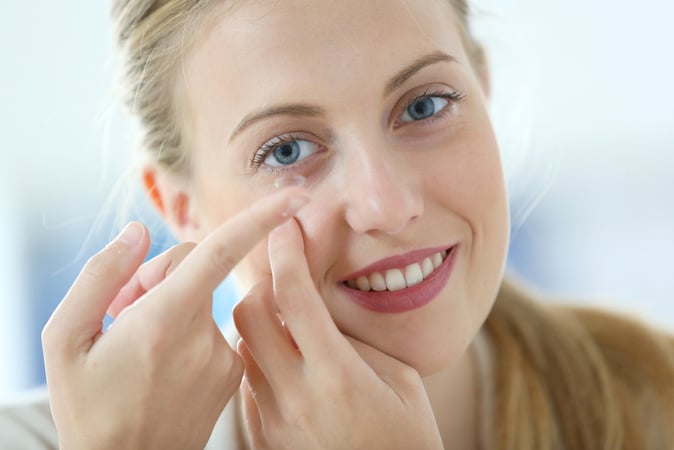Commission adopts regulations on non-medical products

The European Commission recently adopted two implementing regulations for the MDR. The new regulations relate to the list of products without an intended medical purpose set out in Annex XVI of the Medical Devices Regulations.
Implementing Regulation 2022/2346
The Medical Devices Regulations establishes the safety and performance requirements for medical devices used in the EU. However, it also covers products that have a similar function to medical devices but which are aesthetic rather than medical in nature. This includes materials used in cosmetic surgery, such as implants, dermal fillers and body sculpting equipment. It also includes contact lenses, body hair removal devices and electrical brain stimulators. The Commission was required to adopt common specifications for these products, addressing amongst other matters, risk management and clinical evaluation.
The Commission has now done so, adopting Commission Implementing Regulation 2022/2346, which addresses the common specifications for Annex XVI products. The Implementing Regulation sets a basic set of regulations (Articles 1-3) addressing scope and transitional periods. The Regulation is then structured around seven annexes. Annex I lays down common specifications for all Annex XVI products. These specifications include general requirements for risk management (e.g. planning, identification of hazards, risk evaluation, control and review) and information that is to be provided with the device (e.g. in instructions for use and labelling).
The other six annexes are product specific, setting out specific risk and information requirements for different product types. The annexes set out common specifications for:
- Annex II – cosmetic contact lenses, excluding those containing tools (e.g. antenna, microchip) and those which are active.
- Annex III – products introduced into the human body through surgically invasive means for the purpose of modifying the anatomy, with the exception of active implantable devices, tattooing equipment, piercings and products for the fixation of body parts.
- Annex IV – substances or items intended to be used for facial/dermal/mucous membrane filling by subcutaneous, submucous or intradermal injection or other introduction, excluding active devices or those for tattooing.
- Annex V – equipment intended to be used to reduce, remove or destroy adipose tissue (e.g. equipment for liposuction, lipolysis or lipoplasty), excluding active implantable devices.
- Annex VI – high intensity electromagnetic radiation (e.g. infra-red, visible light and ultra-violet) emitting equipment intended to be used on the human body for skin treatment, excluding equipment using infrared optical radiation to warm the body and sunbeds.
- Annex VII – equipment intended for brain stimulation that apply electrical currents or magnetic or electromagnetic fields that penetrate the cranium to modify neuronal activity in the brain, excluding invasive devices.
The above common specifications are mandatory for the relevant categories of products. Implementing Regulation 2022/2346 applies from 22 June 2023 (apart from Article 2 (3), which is applicable from 22nd December 2022).
Implementing Regulation 2022/2347
The second Commision Implementing Regulation concerns the reclassification of certain groups of active products that do not have an intended medical purpose. We previously wrote about the reclassification initiative when a draft version of the implementing regulation was published a few months ago. The proposal was born out of Member State concerns over potential inadequacies in the regulation of active products without a medical purpose and aims to ensure they are appropriately classified (and therefore regulated) based on risk. Now adopted, the implementing regulation ensures that these active products are subject to the same pre- and post-market requirements as comparable active medical devices.
The Commission’s final version confirms that the following reclassifications apply to certain Annex XVI products, in derogation from the Class I default rule for active devices:
- High intensity electromagnetic radiation-emitting equipment for use on the human body, which is intended for hair removal only, is to be reclassified as Class IIa.
- Other high intensity electromagnetic radiation-emitting equipment for use on the human body, which is intended for skin treatment (including tattoo removal) is reclassified as Class IIb.
- Equipment intended to be used to reduce, remove or destroy adipose tissue, is reclassified as Class IIb.
- Equipment to be used for brain stimulation, which apply electrical currents or magnetic or electromagnetic fields which penetrate the cranium to modify neuronal activity in the brain, are to be classified as Class III.
These confirmed changes will place a heavier regulatory burden for manufacturers of the above products. In particular, they will result in changes to the applicable conformity assessment procedure, and require that the manufacturer contact an EU Notified Body to carry out the relevant assessment.
We previously wrote that the draft implementing regulation did not address transitional periods for these products. Neither does the final adoption, which presents challenges for manufacturers of these products. The implementing regulation will enter into force on the 20th day after its publication in the Official Journal of the European Union. The Implementing Regulation was adopted on the 1st December 2022, and the Official Journal indicates that its date of effect is 22nd December.
How we can help
If you are interested in learning more about these reclassification changes and how they may affect the classification of your device, please reach out to any member of the team. Please also register your interest in our AI-powered guide to the medical devices regulations, below. Our guided assessment incorporates all official updates to the regulations, and will be able to guide you through the regulatory maze.




